Have you ever wondered why your scope seems to betray your aim after each shot, shifting slightly from its original position? If you’re a shooter or a hunter, this scenario might sound all too familiar. Recoil, the powerful backward kick generated when a firearm discharges a round, is not only an exhilarating part of the shooting experience but also a force to be reckoned with. Recoil can significantly impact the accuracy and precision of your shots, especially when it comes to the performance of your scope.
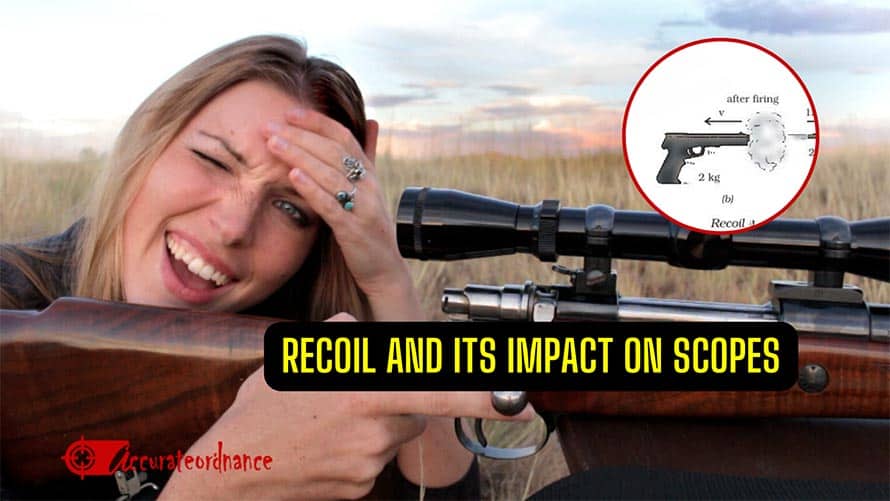
Whether you’re a seasoned marksman or just getting started, understanding how recoil affects your shooting equipment is crucial for achieving consistent and accurate results. So, let’s embark on a journey to unravel the mysteries of recoil and learn how to ensure that your scope remains a steadfast ally in your pursuit of precision.
- Understanding Firearm Discharge
- Factors Contributing to Recoil Generation
- Types of Recoil
- Measurement of Recoil
- Effect Of Recoil on Accuracy
- Scope Components Vulnerable to Recoil Impact
- Scopes Designed for Recoil Resistance
- How To Manage Recoil
- FAQS
- Can recoil damage a scope?
- What factors should I consider when selecting a scope for managing recoil?
- Are there any recoil reduction systems available for scopes?
- Can scopes with higher magnification handle more recoil?
- What scope mounting options are best for minimizing the impact of recoil?
- How do I test and evaluate a scope’s performance under recoil?
- Are there any special considerations for specific types of firearms and their impact on scopes?
Understanding Firearm Discharge
Recoil, in the context of firearms, refers to the backward motion or kick experienced by a shooter when a round is discharged from the firearm. This phenomenon occurs due to Newton’s third law of motion, which states that “for every action, there is an equal and opposite reaction.” In the case of a firearm, the action is the rapid expulsion of a bullet from the barrel, propelled by expanding gases generated by the ignition of gunpowder. The equal and opposite reaction to this forward motion of the bullet is the backward motion of the firearm itself, commonly referred to as recoil.
Factors Contributing to Recoil Generation
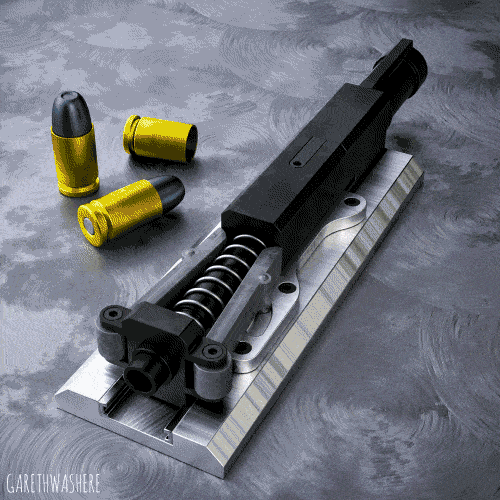
Bullet Acceleration
When a shooter pulls the trigger, a series of events is set in motion. The firing pin strikes the primer, initiating the ignition of gunpowder within the cartridge. As the gunpowder rapidly burns, it transforms into high-pressure gas. This explosive transformation generates an immense amount of energy that is channeled directly behind the bullet. This buildup of pressure forces the bullet forward down the barrel, accelerating it to high speeds. The acceleration of the bullet is a fundamental component of recoil, as it creates a significant forward force within the firearm.
Gas Expansion
As the gunpowder burns and releases expanding gases, it creates a substantial amount of pressure inside the cartridge case. This pressure pushes against both the base of the cartridge case and the base of the bullet itself. While the primary purpose of this pressure is to propel the bullet forward, it also contributes to the generation of recoil. The force exerted against the cartridge case and bullet base pushes the entire firearm backward, in opposition to the bullet’s forward motion. This counteraction is a vital aspect of the recoil mechanism.
Bullet Mass and Velocity
Recoil is not solely dependent on the explosion of gunpowder; the bullet itself plays a pivotal role. Two key factors influencing the magnitude of recoil are the mass and velocity of the bullet. A heavier bullet or one with higher velocity carries more momentum. According to the conservation of momentum, the total momentum of the system before and after firing must remain constant. Consequently, a bullet with greater momentum generates more recoil when expelled from the firearm, as the backward force required to counterbalance its forward momentum is greater.
Firearm Mass
The mass of the firearm itself significantly affects the perception of recoil. Heavier firearms, owing to their increased mass, tend to exhibit less pronounced recoil. This is because the firearm has more inertia, meaning it resists changes in its state of motion. When fired, the firearm’s mass helps absorb and distribute the recoil energy more effectively, resulting in a smoother and less jarring experience for the shooter. Lighter firearms, on the other hand, transmit recoil more abruptly to the shooter, making it feel more intense.
Firearm Design
The design of the firearm is a critical factor in how recoil is experienced. Various aspects of firearm design can influence recoil, including:
Action Type: Different firearm actions (e.g., bolt-action, semi-automatic, or fully automatic) manage recoil differently. Semi-automatic and fully automatic actions, for example, often have mechanisms to mitigate recoil effects.
Muzzle Brake or Recoil Pad: The presence of a muzzle brake, which redirects some of the escaping gases to reduce recoil, or a recoil pad, which cushions the firearm’s impact against the shooter’s shoulder, can greatly affect perceived recoil.
Stock Configuration: The shape and design of the firearm’s stock can influence how recoil forces are transmitted to the shooter’s body. Ergonomically designed stocks can help manage recoil more effectively.
Types of Recoil
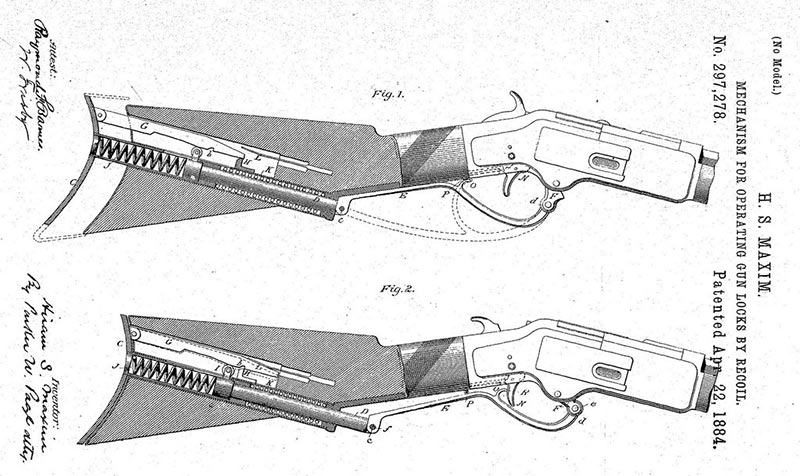
Recoil is a multifaceted phenomenon, and it can be classified into several types, each with its own characteristics and implications. Understanding these various types of recoil is crucial for shooters, as it helps them anticipate and manage the forces they will experience during firearm discharge. Here are the primary types of recoil:
Felt Recoil
Felt recoil refers to the shooter’s subjective perception of the recoil forces. It is the recoil experience as felt by the shooter, and it can vary significantly from one person to another. Felt recoil is influenced by several factors, including the shooter’s body size, shooting stance, and familiarity with firearms. Recoil can feel more or less intense based on these personal factors. Felt recoil matters because it affects a shooter’s comfort and accuracy. A shooter who experiences excessive felt recoil may develop flinching or other involuntary movements that can negatively impact their aim.
Mechanical Recoil
Mechanical recoil, also known as actual recoil or physical recoil, refers to the objective, measurable forces generated during firearm discharge. It is the physical backward motion of the firearm due to the bullet’s acceleration and the expansion of gases. Mechanical recoil can be measured in terms of recoil energy, recoil velocity, and recoil impulse. These measurements quantify the magnitude and duration of the recoil forces. Understanding mechanical recoil is essential for assessing the impact of recoil on the firearm and any accessories, such as scopes. It allows shooters to choose the right equipment and techniques to manage and mitigate these forces effectively.
Secondary Recoil
Secondary recoil refers to the complex vibrations and movements that occur in the firearm after the bullet has left the barrel. These vibrations and movements are a result of the sudden release of energy during discharge. Secondary recoil can manifest as barrel whip or vibration in the firearm’s components. It is usually not directly felt by the shooter but can have long-term effects on accuracy and consistency.
Scope Recoil
Scope recoil specifically pertains to the impact of recoil forces on optical devices like scopes and sights mounted on firearms. It is essential to understand how recoil affects scopes to maintain accuracy and prevent damage. Recoil can cause shifts in the position of scopes, altering the point of impact and accuracy. Additionally, excessive recoil can damage or even destroy scopes that are not designed to withstand such forces.
Measurement of Recoil
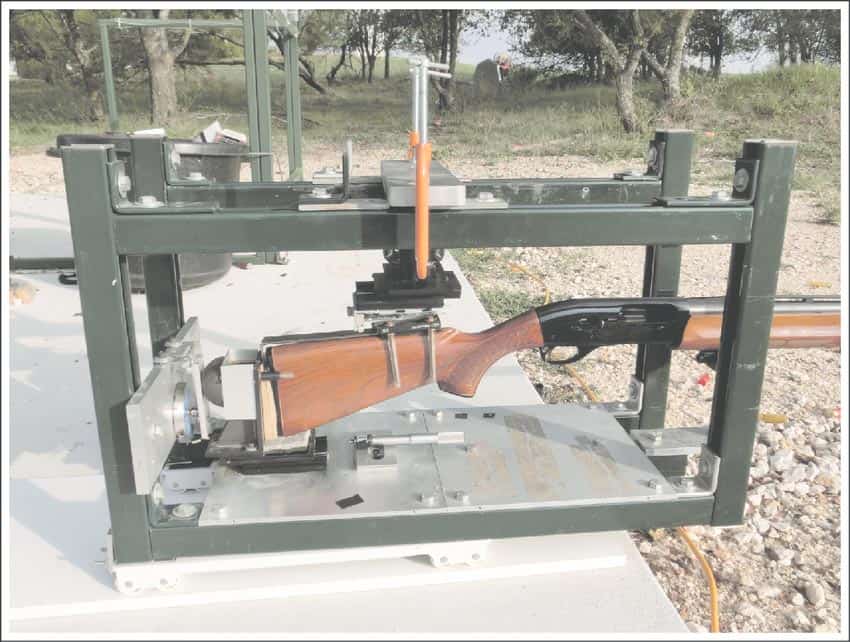
Measurement of recoil is crucial for understanding and quantifying the force generated when a firearm is discharged. Here, we will discuss the three main ways to measure recoil:
Recoil Energy
Recoil energy represents the total kinetic energy generated by the backward motion of the firearm when a shot is fired. It is measured in joules or foot-pounds (ft-lbs). Recoil energy quantifies the overall force exerted on the shooter, affecting their ability to control the firearm and maintain accuracy.
Recoil Velocity
Recoil velocity is the speed at which the firearm moves backward immediately after firing a shot. It is measured in meters per second (m/s) or feet per second (fps). Recoil velocity is often measured using specialized instruments like recoil velocity sensors. These tools capture the firearm’s backward movement and calculate the velocity.
Recoil Impulse
Recoil impulse represents the change in momentum of the firearm as a result of firing. It is measured in Newton-seconds (Ns) or pound-seconds (lb-s). Recoil impulse is calculated by multiplying the mass of the firearm by its change in velocity during recoil. Mathematically, Recoil Impulse = Mass x Change in Velocity.
Effect Of Recoil on Accuracy
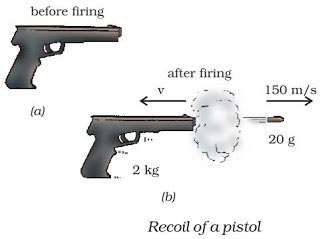
Altered Point of Impact
When a firearm is discharged, the recoil forces cause it to move backward. This movement can shift the point of impact for subsequent shots. If the shooter does not compensate for this recoil-induced shift, their shots may consistently miss the target. To counteract the altered point of impact, shooters must practice techniques such as follow-through, where they maintain their sight picture and aim even after the shot breaks. Additionally, adjustments to the firearm’s sights or scope may be necessary to realign the point of impact.
Reduced Sight Picture Stability
Recoil can disrupt the shooter’s sight picture, making it challenging to maintain focus on the target. The rapid movement of the firearm during recoil can lead to blurry or misaligned sights. Shooters can mitigate this effect by using proper shooting stances and grips that allow them to better manage recoil. Recoil-absorbing accessories like recoil pads or muzzle brakes can also help reduce the severity of recoil, thereby preserving the shooter’s sight picture.
Flinching and Trigger Jerking
The anticipation of recoil, particularly if it is perceived as harsh or uncomfortable, can lead to flinching or jerking the trigger. These involuntary reactions can cause the shooter to pull the shot off target. Overcoming flinching and trigger jerking requires practice and mental discipline. Shooters can train themselves to stay steady and maintain proper trigger control even in the face of recoil. Gradually increasing exposure to recoil can help desensitize shooters to its effects.
Fatigue and Loss of Concentration
Repeated exposure to heavy recoil can lead to physical and mental fatigue. Shooters who experience fatigue or discomfort may struggle to maintain focus and concentration, affecting their ability to shoot accurately. Adequate physical conditioning and proper shooting techniques can help reduce the physical strain of recoil. Taking regular breaks during shooting sessions and staying hydrated can also mitigate the effects of fatigue and help maintain concentration.
Scope and Optics Damage
Recoil can be especially detrimental to scopes and other optical devices mounted on firearms. The shock from recoil forces can cause scopes to lose zero or even get damaged. Using recoil-resistant scopes, ensuring proper scope mounting, and employing recoil-absorbing accessories like scope rings and bases can help protect optics from recoil-related damage.
Scope Components Vulnerable to Recoil Impact
Here are the scope components most vulnerable to recoil impact:
Lenses and Optics
The lenses and optical components of a scope are highly susceptible to damage from recoil. The abrupt motion of the rifle can cause the lenses to shift, crack, or even break, resulting in optical distortion or loss of clarity. Damage to the lenses directly affects the scope’s ability to transmit light and provide clear, crisp images. It can lead to reduced image quality, decreased brightness, and distortion, making accurate aiming and target acquisition difficult. To protect lenses and optics, shooters can invest in scopes with rugged construction designed to withstand recoil. Recoil-resistant scopes often feature shockproof and fog-proof designs, reinforced lens coatings, and impact-resistant materials.
Mounts and Rings
Scope mounts and rings connect the scope to the rifle. Recoil can stress these components, potentially causing them to shift, loosen, or fail. Loose or damaged mounts and rings can result in catastrophic scope failures, including the scope falling off the rifle or becoming misaligned. This can render the firearm inaccurate and the scope unusable. Choosing high-quality mounts and rings designed to withstand recoil is crucial. Proper installation and regular inspection of mounting hardware are essential to ensure a secure and stable connection between the scope and the rifle.
Adjustment Mechanisms
The adjustment turrets or knobs on a scope are used to zero the scope and make fine adjustments for elevation and windage. Recoil can affect these mechanisms, leading to changes in point of impact. Altered adjustment settings can cause shots to consistently miss the target, requiring the shooter to continually re-zero the scope. Recoil-resistant scopes often feature locking turrets or mechanisms designed to prevent unintentional adjustments.
Scopes Designed for Recoil Resistance
Features to Look for in Recoil-Resistant Scopes
Rugged Construction: Recoil-resistant scopes are typically built with robust, durable materials that can withstand the physical stresses of recoil. Look for scopes made from high-quality aluminum or other tough alloys.
Reinforced Lenses: Lenses are vulnerable to recoil-induced shocks. Recoil-resistant scopes often feature lenses with multiple coatings, including anti-scratch, anti-reflective, and anti-fog coatings. These coatings protect the lenses and maintain optical clarity.
Shockproof Mounting Systems: A scope’s mounting system is critical for maintaining its zero. Recoil-resistant scopes may come with robust mounting systems or features like Picatinny rails for secure attachment to the rifle.
Generous Eye Relief: Recoil-resistant scopes often offer ample eye relief, which is the distance between the shooter’s eye and the scope. This distance minimizes the risk of the scope’s eyepiece striking the shooter during recoil.
Examples of Recoil-Proof Scope Brands
Leupold: Leupold is known for producing rugged and reliable scopes. Their scopes are tested to withstand recoil forces and offer excellent optical clarity. The VX-3i and VX-5HD series are popular choices for recoil-resistant scopes.
Vortex Optics: Vortex offers a range of scopes designed for recoil resistance. The Viper and Razor HD series, in particular, are known for their durability and clarity, making them suitable for high-recoil firearms.
Zeiss: Zeiss produces scopes with high-quality optics and robust construction. The Zeiss Conquest V4 and Victory V8 series scopes are designed to withstand recoil while delivering exceptional optical performance.
Nightforce: Nightforce scopes are often chosen for heavy-recoil applications. The ATACR and NXS series scopes are renowned for their durability and precision.
Trijicon: Trijicon scopes, like the AccuPoint and AccuPower series, are built to endure recoil while offering illuminated reticles for low-light conditions.
Burris: Burris scopes are budget-friendly options with features for recoil resistance. The Fullfield E1 and XTR II series scopes are popular among shooters looking for reliable optics.
How To Manage Recoil
Proper Shooting Stance
The shooter’s stance plays a fundamental role in managing recoil. A solid and well-balanced shooting stance helps distribute and absorb recoil forces more effectively.
Recoil Pads and Buttpads
Recoil pads and buttpads are accessories designed to absorb and dissipate recoil energy, reducing the perceived recoil experienced by the shooter. These pads can be added to the stock of the firearm to increase the surface area that contacts the shooter’s shoulder. They come in various materials, including rubber, gel, and foam. Recoil pads significantly reduce the felt recoil, making shooting more comfortable and manageable. They are especially useful for high-recoil firearms like shotguns and magnum rifles.
Muzzle Brakes and Compensators
Muzzle brakes and compensators are muzzle devices designed to redirect and manage the gases expelled when a firearm is discharged. They can reduce recoil forces and muzzle rise.
FAQS
Can recoil damage a scope?
Yes, recoil can damage a scope. The force generated during recoil can cause the scope’s internal components to shift, lenses to become misaligned, or even break delicate parts. This damage can result in a loss of accuracy and may render the scope unusable.
What factors should I consider when selecting a scope for managing recoil?
Look for scopes with a recoil rating suitable for your firearm and ammunition. Trusted brands often produce scopes better equipped to handle recoil.
Are there any recoil reduction systems available for scopes?
Yes, there are recoil reduction systems like recoil dampening mounts and shock-absorbing rings that can help reduce the impact of recoil on scopes. These accessories can help protect your scope and improve shooting comfort.
Can scopes with higher magnification handle more recoil?
Not necessarily. Magnification doesn’t directly affect a scope’s ability to handle recoil. What matters more is the scope’s construction, durability, and recoil rating. High-quality scopes with higher magnification can handle recoil if they are designed for it.
What scope mounting options are best for minimizing the impact of recoil?
One-piece scope mounts or sturdy picatinny rails are often recommended for minimizing the impact of recoil. These provide a stable and secure platform for your scope, reducing the chances of shifting or damage.
How do I test and evaluate a scope’s performance under recoil?
To test a scope’s performance under recoil, take it to the range and fire multiple rounds. Observe if the scope maintains zero and if there are any visible signs of damage or shifting. Consistency and accuracy are key indicators of good performance.
Are there any special considerations for specific types of firearms and their impact on scopes?
Yes, different types of firearms generate varying levels of recoil. Rifles typically produce more recoil than handguns, and shotguns can have substantial recoil as well. Consider the type of firearm, its caliber, and ammunition when selecting a scope to ensure it can handle the specific recoil characteristics of your firearm.

Mike Hardesty is a published freelance gun writer. He also possesses specialized expertise in rifle scopes With dozens of articles and reviews published in Pew Pew Tactical, Snipercountry.com, and TTAG (The Truth About Guns), Mike is considered a firearms expert. His special area of expertise is handguns.
Mike is a long-time shooter. He has been punching paper targets, taking deer and other game and shooting at competitions since about 1975. Other related pursuits include reloading and bullet casting. He currently reloads for over 10 calibers, both handgun and rifle. His reloads, particularly for 9mm, were in great demand during the height of the ammo shortage among family and friends. He donated hundreds of rounds to informal shooting sessions. He was quoted as saying “I do not sell my reloads but I sure will help my guys shoot ’em for free!”. He has a few cherished firearms that he has inherited or otherwise procured — those are his favorites.
He earned B.S. and M.S. degrees from Indiana State University in 1974-1975.
He’s a firearm experts and is the founder of mhardesty.com.
